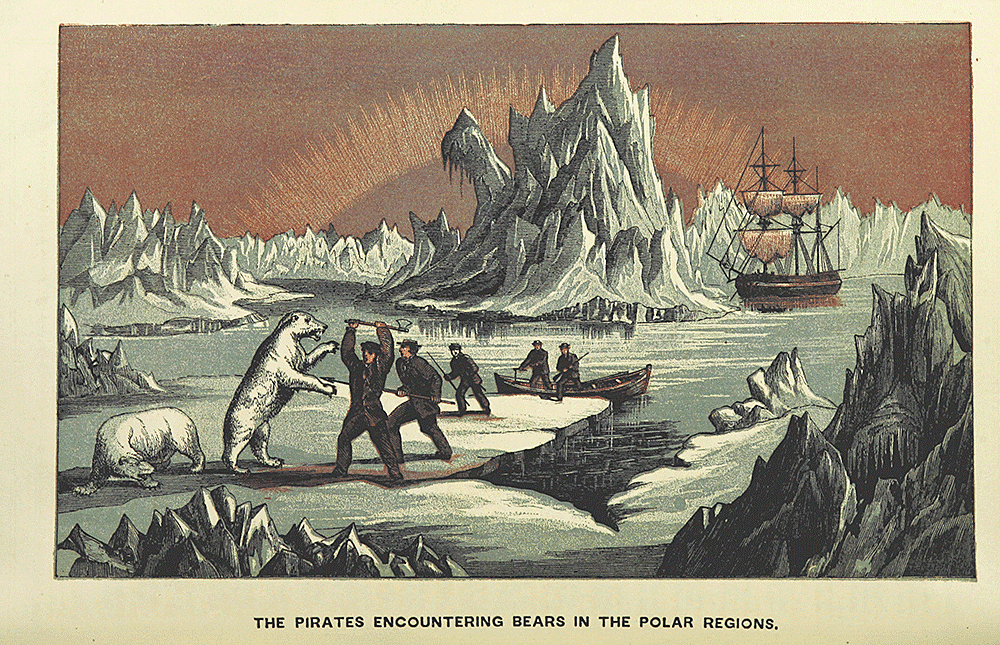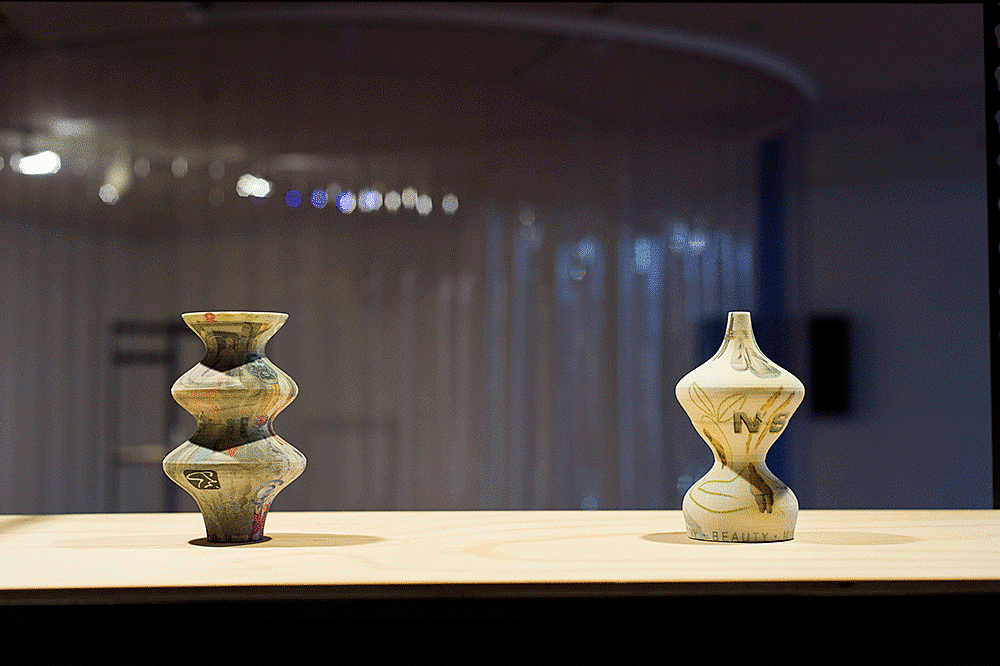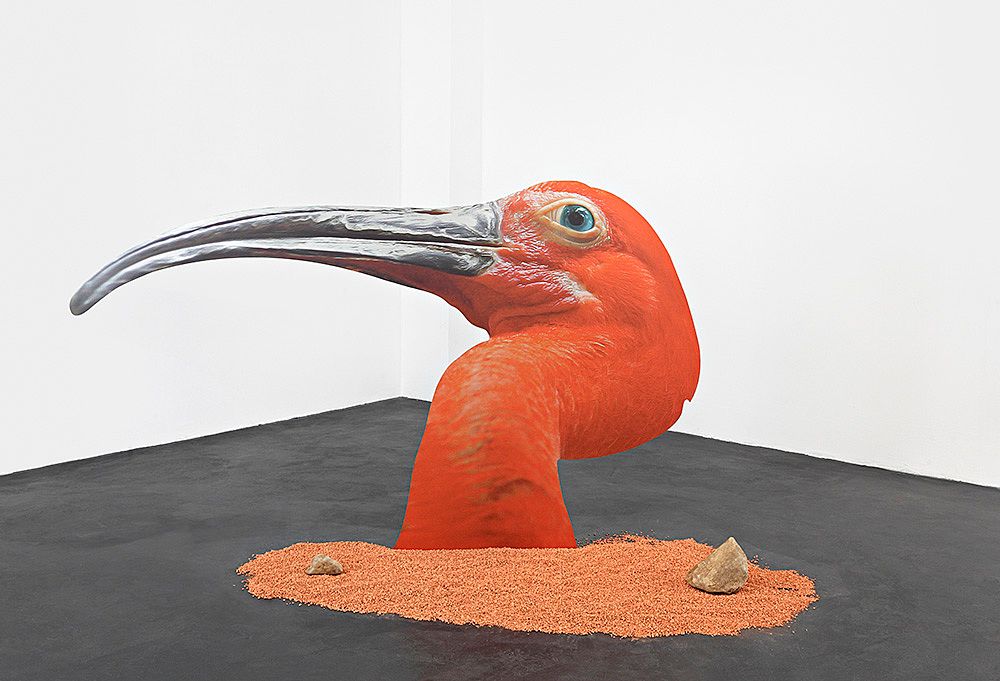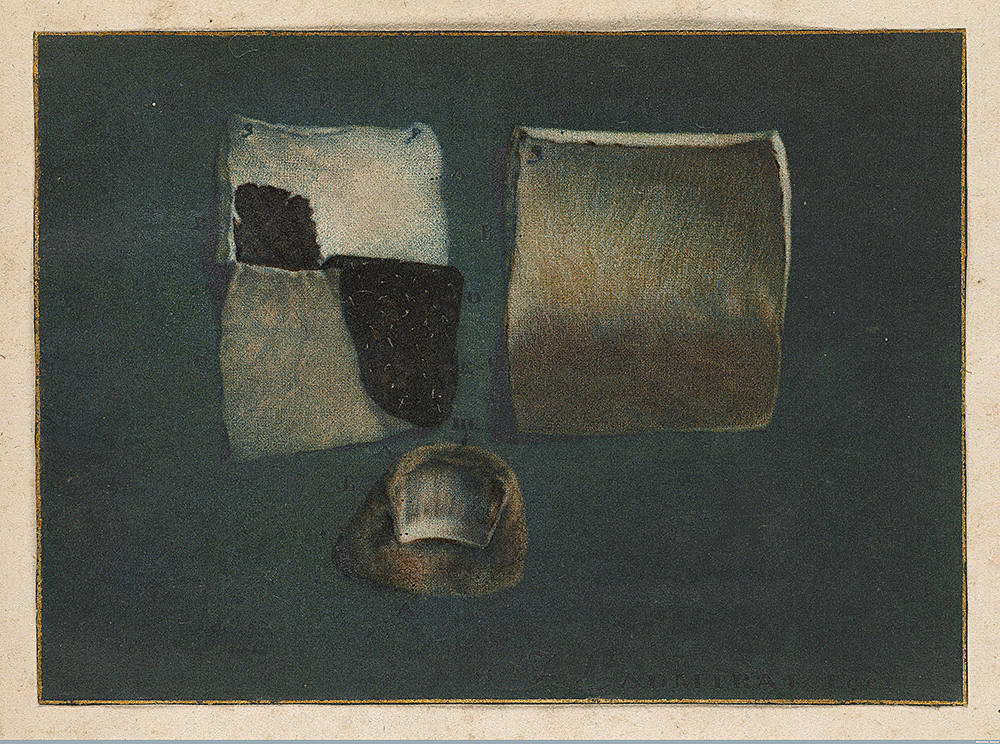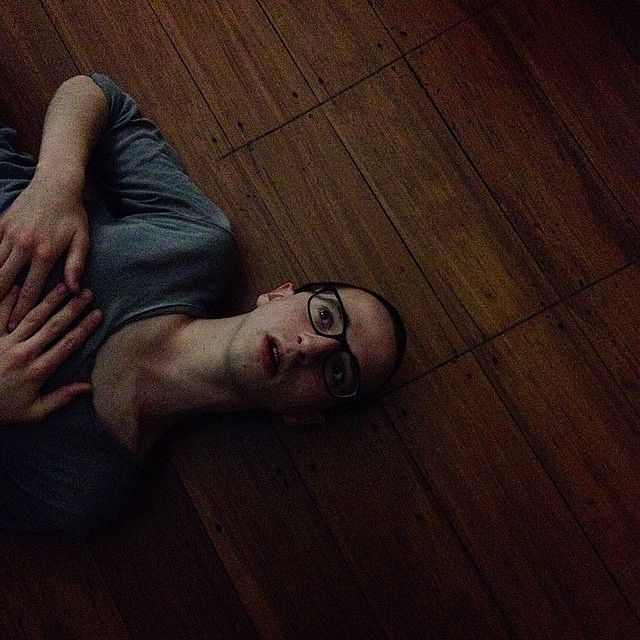Dimensions Variable
In 1988, Jamie Ritblat received an extravagant gift for his 21st birthday. His parents, property developers and patrons of the arts Sir John and Lady Jill Ritblat, had purchased for him a work of art from a then 23-year-old Damien Hirst. The work was presented as a set of instructions: a grid of coloured dots was to be painted directly onto the wallpaper in Ritblat’s house in London. Each dot was to be 4.5 inches in diameter, and there was to be a space of 4.5 inches between each dot. The instructions also specified that, should Ritblat leave the house, the wall would have to be painted over.
Hirst carried out his instructions himself and the painting remained in situ for almost two decades. During this time, Hirst graduated from Goldsmith’s and continued painting dots, dozens and dozens; so many, in fact, that he began to lose track of them. He hired a team of assistants to paint his dots for him, and to sell them for him, sometimes for upwards of USD$2 million. This allowed him to do more important things, like think about sharks.
Jamie Ritblat grew tired of the house. He sold it in the mid-2000s and at some point between packing up his belongings, cancelling his electricity, and changing the address on his magazine subscriptions, he forgot to have the dots painted over. A simple mistake, we can only assume. The subsequent owners of the house took a disliking to the dots. It isn’t clear how they discovered Hirst had painted them. It may have been mentioned by some shrewd real estate agent. It’s possible, however, that they recognised them immediately. As Jerry Saltz pointed out in his review of Hirst’s 2012 simultaneous retrospective at all 11 of Larry Gagosian’s galleries, ‘You see one, and you really have seen them all.’ The new owners of the house, The Simpsons, saw an opportunity. In 2007, they hired a team of experts to remove the dots from the wall and apply them to aluminium backing board. Then they attempted to sell them.
The Simpsons were contacted by Hirst’s company, Science Ltd, who politely let them know that the dots Damien Hirst had painted two decades earlier were, in fact, no longer by Damien Hirst. According to Science Ltd., Ritblat had exchanged the certificate of authentication for a similar work on canvas when he sold the house. The Simpsons, though they owned the house, did not own the work and therefore had no right to sell it. Science Ltd. requested the work be returned to the company and destroyed.
Both Sotheby’s and Christie’s refused to sell the work for fear of retribution from Hirst. For over a year, maybe longer — certain details are still opaque — the work has been sitting in the storeroom of Lamberty Antiques in London in a kind of threshold, somewhere between occupying space and having permission to remain in existence.
This seems like an interesting story. An ensemble of characters, each as unsympathetic as the next. A farcical conceit. An argument that seems absurd, so far removed from the real concerns of real people. And then there’s Hirst, whose name and work we know. Who, behind his stern brow behind terrible sunglasses, his widow’s peak, maybe half a snarl, acts as a metonym for everything we’re supposed to hate about contemporary art. This seems like a curious tale, but it isn’t.
There’s a precedent, both legally and practically, for the division of art and labour. Hirst was able to hire a team of assistants because of a certain understanding between artists and buyers that, according to Nicolas Bourriaud, determines art as a formula and the object as its container. The artist need only account for the cognitive labour of an object, and the cognitive labour of the artist is assured by a certificate of authenticity. Hirst came up with the idea of the dots, so the work is his. The physical production isn’t important. It’s permitted to remain invisible.
A logical leap of faith takes place when we decide to understand the contemporary art market. With no currency placed on the scarcity of objects, we must trust that value can be assigned to cognitive labour — to the idea of an object — fairly and accordingly.
The problem here is that the market still relies on scarcity to produce value. Conceptual artists respond in direct antagonism to the sale of fetishised goods for massively inflated value by undermining the possibility of scarcity, by turning the art object into something infinitely reproducible. Those who rely on scarcity — dealers, collectors, institutions — are therefore left to manufacture it, and they do so through the certificate of authenticity. The Ritblat case is a mere glitch in an otherwise seamless demonstration of the market’s ability to absorb impact.
These glitches happen every so often, more often than you might think. In 2012, art collector and dealer Roderic Steinkamp attempted to sue Rhona Hoffman Gallery for irretrievably misplacing the certificate of authenticity for a Sol LeWitt wall drawing Steinkamp had consigned to the gallery for safe keeping. In the same year, collector Jonathan Sobel issued a lawsuit against photographer William Eggleston following a successful sale of digital prints at Christie’s. Many of the prints included in the sale had been sold decades earlier, printed using more archaic, more labour intensive methods. Sobel’s primary concern was that reissuing the photographs would have a detrimental effect on the value of the older prints, some of which Sobel owned. News of both of these attempted lawsuits appeared on Artnet, and Art News, and Hyperallergic, places one would expect to see these kinds of stories. There was, however, little said outside these outlets. The most obvious difference between these cases and the Hirst case is the kinds of outlets that reported the story. Stories appeared in The Telegraph, the BBC, in the North Devon Journal; publications that wouldn’t usually concern themselves with art market gossip. The difference, perhaps, is the potency of Hirst’s brand carries outside of a certain community.
Circulation is one factor. Another is timing. No one would ever accuse me of offering Hirst undue credit, but consider the possibility that in 1988, Hirst, whether he knew it or not, stumbled upon a new model for the distribution value of images, one that could be translated out of the art world. An image affixed to a wall is cumbersome. It does not move unless pried away by specialists. In this new model of image value, excavating it wouldn’t be worth the effort, because scarcity wouldn’t enter into its lexicon. Consider, then, the possibility that one of the factors in the attention this case received has to do with the way the image moves now, through wires and networks, and the omission of any physical trace this entails, with what it contains, who it belongs to, and who is given the right to determine how and where it appears.
Hirst’s dots, by design, need to be nimble. They exist for a global art market, but they need some way to circumvent the perils of freight, the long periods of uncertainty between being in one place and being in another. Hence the brevity and transparency of his instructions to Ritblat. They can transgress state boundaries, geographic imposition, the inevitable decay of pigment and substrate, but they cannot multiply easily. As per the certificate, Hirst can create as many dots as he likes, but they can only reproduce themselves by destroying their previous edition.
In his introduction to the November 2011 issue of e-flux, Boris Groys claimed, without really elaborating how, that the visual grammar of the internet echoes that of conceptual art practices developed from the late 1960s onwards. With Hirst in mind, it may be possible to imagine how the dots — by virtue of their anticipation of their disappearance and reappearance elsewhere — precede the whims of the newsfeed or the Tumblr dashboard; the tendency for artifacts to proliferate briefly before effacing themselves; the way Facebook, when not monitored for a second, will wipe itself clean and present content more immediate, more relevant to your interests. Hirst toys with a new distribution model for images, but he doesn’t go nearly far enough. He doesn’t quite anticipate the kind of ambivalence the contents of the newsfeed would take towards its original form.
To be truly athletic, the dots must shed not just matter, but the insistence of reemerging intact. Hito Steyerl has proposed a language with which to speak to the necessities for this mode of traveling. In this economy the efficient image is the Poor Image. The Poor Image has neither point of origin or any discernable trajectory. It is everything from a leaked screener of a Hollywood film, to blurry footage of a doctor overwhelmed by grief, to a collage of Chris Evans’ face in varying states of glee emblazoned with affected, sincere devotionals. The Poor Image is a ghost, downloaded, uploaded, copied and pasted, squeezed into places it could never possibly fit. Steyerl writes:
[The Poor Image] transforms quality into accessibility, exhibition value into cult value, films into clips, contemplation into distraction. The image is liberated from the vaults of cinemas and archives and thrust into digital uncertainty, at the expense of its own substance. The poor image tends towards abstraction: it is a visual idea in its very becoming… Its filenames are deliberately misspelled. It often defies patrimony, national culture, or indeed copyright.
In this economy, image value, rather than being determined by a speculative market, is determined by how slippery an image is; how effectively it evades being caught, explained, or fully understood. There’s a good reason why we refer to the proliferation of these images using the language of epidemiology.
The problem with proposing a new language, however, is the difficulty in translating back to something familiar. The Poor Image moves too fast for words; too fast even to be described adequately without losing something essential, let alone to make its way through the legislative process.
The Berne Convention, signed by New Zealand, Australia, the United Kingdom and 165 other countries, guarantees artists a certain set of inalienable moral rights over their works. These operate independently of any economic rights the artist may have. Among them is the right to object to alteration of a work when the alteration is considered derogatory treatment, including addition, deletion or adaptation. This is at odds with the idea of the Poor Image, which lives for alteration. ‘In the framework of contemporary culture,’ claims Boris Groys in his 2009 essay ‘Politics of Installation,’ ‘an image is permanently circulating from one medium to another medium, and from one closed context to another closed context.’ The Poor Image is chopped up, mangled, squeezed, presented with ironic or adoring comment. It is created to be rewritten.
Perhaps the finest example of the state’s inability to comprehend any model of image circulation other than the one offered to it by those with an interest in maintaining the old order is the 2011 Copyright Infringement Bill, or the ‘Skynet Bill’. Emphasis, of course, was placed on cultural production as investment. There could be no other conceivable purpose for the creation of images beyond the anticipation of return - whether that return is in the form of a national mythology deployed by Tourism New Zealand, or the nebulous promise of a robust economy. “It is important in law,” Wayne Mapp said in his opening statement to the second reading of the bill, “that we provide appropriate protection for creative industries so that they can continue to provide jobs for New Zealanders and continue to contribute to our economy.” When questioned by Labour’s Clare Curran as to whether he has engaged in copyright infringement, Mapp denies, assuring the house that this particular plague is restricted to young people. Again, Labour’s Steve Chadwick mentions the youth of offenders, stating that his children fail to “see [content piracy] as being illegal, at all.” The only party to vote against the bill, the Greens, took issue with the threat of disconnection contained in the bill. There was, conspicuously or not, an absence of any recognition that a new language of ownership and transmission may be necessary to complement the economy of the Poor Image.
Law, even in a jurisdiction whose legislative process is as rapid as ours, can only ever be reactionary. Six months after the bill passed, though there was a tangible decrease in copyright infringement, the RIANZ sought a reduction in the cost of making a complaint. They hoped, eventually, to send out 5000 copyright infringement notices a month, or 5 percent of all infringements over a year. Telecommunications companies, in response, asked for more money, claiming that the fee did not even come close to the cost of implementing the bill.
The problem is one of scope. Notices, the RIANZ have admitted, are sent out randomly. An early attempt to target heavy infringers failed. The best they can do is make examples of individuals. A target of contacting 5 percent of infringers relies on a logic of contagion whereby if more people know people who know people who have been targeted, more and more will repent. The problem may be in applying an archaic model of ownership and distribution, one that has historically enabled those with capital to gather more, onto circumstances that emerged in direct antagonism of this model. These circumstances resist so efficiently, so quickly, and smoothly, because this particular resistance has created for itself a new language, a new economy of exchange value and distribution. Countless mirrors of torrent sites appear every time one is shut down. The increasingly elaborate efforts of the state to stem the flow of images from the source seem to present, for the most part, a minor inconvenience for many people; a slight change in habits, an adjustment in alliances, an easy relocation from IsoHunt to Kickass.to. As the state’s tactics become more cunning, so too do its antagonists. what.cd, for example, proposes a utopian vision of P2P sharing (it says so explicitly on their front page), in which everyone gives and takes in equal measure. Entrance to the site is restricted to a chosen few, and once admission is granted, users must not only keep their sharing ratio (content uploaded:content downloaded) within an acceptable range, but also behave according an intricate set of rules governing what is allowed to be shared, how it is allowed to be downloaded, how it is to be filed away. The most minor infraction can result in exile. what.cd, though it adopts certain mechanisms used by the state (citizenship limited to a select few, order maintained through fear of retribution), removes the capitalist model of image distribution’s promise of riches. In what.cd’s utopia, any reward available in exchange for the production of images is always proportional to how many images are produced.
The 2011 Copyright Act and the Berne Convention are examples of the state’s attempts to stabilise the image. They both assume that when an image travels it remains the same image, and that each copy, regardless of its fidelity to the original, is a betrayal. In July last year, when people were still talking about Hirst’s dots, stabilisation made another appearance. An argument using the language of conservation emerged from two incompatible positions. Andrew Lamberty, the dealer who agreed to try and sell the painting, sent an email to Artnet explaining that it was in the ‘interests of the history of art’ to allow the painting to be sold to a buyer committed to caring for it. Will Gompertz, the BBC’s arts editor seem to agree that the painting was historically significant, but believed it should have remained in place: “this was painted in 1989, six months after [Hirst] had his famous Freeze show, his spot paintings were there — if I were Jess I'd have left it on the wall as a piece of art history. Its real value, culturally as well as financial, was in that spot.” Which raises the question, if the Simpsons had no legal right to the painting, and if they admitted that they found it offensive, who would be responsible for its ongoing care?
Its continued existence is an anomaly. Science Ltd. are explicit about that. Like a captioned feline printed out and stuck to an office wall, or a meme that’s managed to make its way onto a t-shirt, these images seem incongruous, out of place. Perhaps the argument for posterity is a caveat: it shifts the debate neither forwards nor sideways, but completely misses it all together. And perhaps, then, one can see something a similarity between Gompertz’s call for posterity and the arguments raised by Wayne Mapp and Steve Chadwick during the Copyright Bill debates. Not in sentiment, of course, but in the way both seem to have no understanding of how the image moves now, or what it is used for.
One of the possibilities of a Poor Image economy is the resurfacing of forgotten artefacts. Film essays, minor works by minor artists, household ephemera — objects that, if saved at all, would have previously been kept safe in museum storage or screened only by rare institutions serving niche tastes, are free to circulate. The geographically isolated, the socially anxious, the time-poor are able to hold their own retrospectives. There’s no organising principle, however, no Library of Congress for the online artefact, no Dewey Decimal, and so everything appears at once or not at all. Everything is as important as everything else.
This resurfacing does not discriminate between the historically significant and the chronically undervalued — the decorative, the ornamental, the kitsch. The return of objects, images, things, however, seems to be contingent on the collapse of their structural integrity; that is, there is no promise they will be found in tact, as they were left. In April last year, as part of Dunedin Art Gallery’s Campaign Furniture exhibition, curated by Henry Davidson, Sorawit Songsataya presented a series of vases. Their forms were based on Staffordshire ceramics in the gallery’s collection, traced into digital software, and 3D printed using melted plastic particles. At some point, between entering the software and emerging on the gallery floor, the vases adopted a distinctive coat. Icons of the western canon — muscled Greek war heroes, the Venus of Willendorf — met modern detritus — the Apple logo, selfies of shirtless men: images seen so often they barely register.
A set of videos accompanied the vases, depicting again the vase forms in hyperreal detail: shiny and rubbery and hard. Or furry, sometimes. They spin, as if alerting attention to their insecurity next to the three dimensional object. Or as if advertising something, perhaps even themselves; suggesting the potential of something that isn’t quite there. They appear alongside footage of protests, of the International Space Station, and short excerpts of conversations between friends across a digital interface; things that seem, initially, to bear no relation to each other. There is, however, a logic to Songsataya’s assemblages. When images circulate as quickly as they do now, there is no guarantee they will arrive in any particular order. Sometimes we read backwards. There are times when this seems obvious, necessitating a certain adjustment in behaviours. News is read in reverse on the feed, commentary offered before the terms of the conversation have been set, interrupted constantly, with a mutual agreement that there is no meaning, relationship or currency to be found in the arrangement of things next to each other.
A couple of months ago I woke up to a disembodied Terry Pratchett quote from someone I haven’t spoken to in years, followed quickly by a link to a slideshow featuring Pratchett’s best pictures, followed then by a flurry of obituaries, confirming what I had pieced together from scraps.
What Songsataya anticipates is the institutional adoption of this method. The British Museum, for instance, made almost a million images available online last year. Their distribution seemed to contradict the archival impulse. They were dumped on the Flickr Commons, with no existing taxonomy, no effort to order, label, or distinguish. There was no way of finding what one was looking for. Suggesting, perhaps, that there is no need to look for things based on subject, content, recognisable patterns; that the expectation now is that we will be surprised by what we see; that the oldest state museum in the world has no faith in any online equivalent of the archival method.
Songsataya’s vases are an offering and a withdrawal, not simply in their emergence on the gallery floor, but in the very behaviours that govern the contemporary institution. The vase’s interest is not in the images that decorate them, but in the fundamental problem of their form. The Poor Image strips itself of not just matter, but of moral obligation. It does not consider itself faithful to one particular owner, and thus can take on myriad forms. This isn’t a loss. It is the old, deformed and reformed.
Katja Novitskova considers it in evolutionary terms. Her Approximations series (2012 - ongoing) turns the Poor Image into a site of great potential. A dolphin, several feet tall and wide, with scarring on its skin and that jaunty smile dolphins always wear; or a pair of giraffes, a mother bowing to reach its child’s head; or any number of tropical birds, with brilliant plumage and a sharp, unflinching gaze. In Novitskova’s work, both the image and the animal depicted are subject to necessary evolutionary adaptation. These animals are plucked from search engines, from Tumblr, from Pinterest, from Facebook. These animals, because they are in possession of an essential softness, divorced from any destructive impulse, any danger of attack, circulate freely. They’re caught, briefly, by Novitskova, printed, applied to an aluminum backing and positioned in the gallery space. ‘There is no flatness,’ she assures, ‘flatness is psychological.’ These animals are as real as we need them to be. Real enough to be photographed, real enough to be uploaded and resume circulation in a slightly altered form. For Novitskova, the gallery is never a resting place, because these animals are never still. They are thriving, without the weight of flesh.
This adaptation is necessary. In the gallery space, these animals are safe. There is no threat of industry encroaching on their habitat, no need to clear forests and jungle for housing developments, nor to mine minerals, nor to grow corn; because industry, though neither side might like to admit it, is reliant on the gallery. Consider, for instance, John Ritblat, who made his fortune running one of the largest private property development firms in the United Kingdom. How else would he have been able to afford such extravagant birthday presents?
The Poor Image economy, then, is not necessarily a crisis, it is a continuity sans flesh.
Damien Hirst once dealt in flesh. He did so in a way that made it seem unavoidable, putrefying, always on the edge of rupturing. In 2006, the year after the Simpsons purchased Jamie Ritblat’s home with the dots on the wall, Hirst’s shark suspended in formaldehyde was replaced. The original, commissioned by Charles Saatchi in 1991, had quickly begun to decay, as flesh is likely to do. When asked by the the New York Times whether replacing the work’s central subject was a betrayal of the work, Hirst responded, as if to offer some kind of warning to the Simpsons against investing too much currency in the dots on their wall, “Artists and conservators have different opinions about what’s important: the original artwork or the original intention. I come from a Conceptual art background, so I think it should be the intention.”
Among the things we know about Damien Hirst is that we are too late. Speaking ill of him is no longer cool or fun. No decision, either in court or out, has been released regarding the status of the spot painting. But such a decision, perhaps, is irrelevant. When I say we should no longer speak ill of Hirst is not that he deserves a reprieve, or even a robust defence; what I mean is that his anticipation (and the anticipation that drives conceptualism), while it succeeds in negating the original as sacrosanct, fails to account for the way the Poor Image travels.
Those who speak ill of the art market, who dismiss it as ridiculous, frivolous, as fundamentally divorced from anything resembling human interest are perhaps not philistines after all. We can consider them prophets. Hirst’s shark is slow, as are his dots, and when they reproduce themselves, they can only do so in equivalent form — in the same steel-framed vitrine, as an immovable surface. The Poor Image flourishes because it anticipates its own decay, needing no owner, no place to rest, and no one to finance its continued existence, and it does not discriminate where it appears — whether in the home of the rich, or on the screen of the poor. A .jpeg left on a harddrive will dissolve just as a shark left in formaldehyde does, faster even.
So the image evolves, like Novitskova’s animals, to deal with a shortened lifespan. It learns a language of pathos, of spectacle, of the ephemeral, and it presents itself accordingly as something to be cherished momentarily, but never held still.

